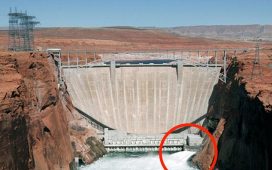A stunning interactive 3D map revealing the hidden details of the Apollo moon landings has been released to commemorate the 50th anniversary of the moon landing.
Users can visualise exactly where Neil Armstrong, Edwin ‘Buzz’ Aldrin were when they, along with Michael Collins, orchestrated one of the most incredible feats in the history of humankind when their Eagle lander touched down on July 20 1969.
Roughly 600 million people are thought to have tuned in to the live broadcast of Apollo 11 and now the grainy television sets can be replaced with the new map.
The graphic, developed by Esri UK, using data from Nasa, allows users to follow the different routes taken by Apollonauts from all the successful missions of the programme, which took a total of 12 men to the lunar surface.
At each landing site the location of the landing modules, moon buggies, reflectors and experimental equipment are all pinpointed.
Apollo 11 was the first mission that put humans on the moon, with both Armstrong and Aldrin gracing the surface while Collins piloted the lunar orbiter himself.
How to use the 3D map: In order to see lunar landing sites, craters, seas and other topography, simply use the slides in the top right to explore – or you can zoom into the moon, using the cursor to spin the moon around. You can then click on to the various icons to reveal facts about the various missions.

The new interactive map allows users to follow red and yellow routes (as above) and chart the journey of the team who had been travelling to the moon

Screen grabs from the interactive map show astronauts using space buggies to get around the moon during their missions

The map pinpoints the various landing sites as well as charts missions such as Apollo 11, as it takes you on an in depth journey of the moon
Apollo 11 was the culmination of a decade of engineering effort and scientific innovation driven by the famous space race between the Soviet Union and the US.
John F Kennedy inspired his nation to get behind the Apollo missions during the 1960s following his iconic speech at Rice University in Texas.
The president, who died just over a year after he delivered the rousing oration, proclaimed: ‘We choose to go to the Moon in this decade and do the other things, not because they are easy, but because they are hard; because that goal will serve to organise and measure the best of our energies and skills, because that challenge is one that we are willing to accept, one we are unwilling to postpone, and one we intend to win.’
And the space agency honoured the president posthumously by achieving his goal and sticking to his established timeline – beating it by three years when three Apollo astronauts took off from Cape Canaveral on July 16 1969 and landing on the lunar surface four days later.
Both command module pilot Michael Collins along with lunar module pilot Buzz Aldrin had both been in the US Air Force, while Commander Neil Armstrong had served in the US Navy.
Despite spending over eight days together during the missing, the three astronauts never actually became close friends like other crews, such as that of Apollo 12.
The astronauts used a Saturn V rocket to get to the moon, the most powerful rocket ever made.
America, and the rest of the world, held its breath as the enormous rocket engines fired up and began the vast ascent into space.
Less than 18 months prior, Apollo 1 nearly derailed the entire space programme before it even got off the ground when three astronauts – Virgil ‘Gus’ Grissom, Ed White II and Roger Chaffee – were trapped in a searing inferno during a faulty test run of Apollo 1.
The new interactive graphic, comes as it was revealed just last week that the UK intended to put a man on the moon before the US and the Soviet Union.
But the Soviets streaked out to an impressive lead in the space race when Yuri Gagarin breached the final frontier in 1961 and became the first human in orbit.
The US fell behind their arch-rivals and it was not until the dawn of the Apollo programme that they snatched momentum from the Soviets and took the lead in the race to the Sea of Tranquillity.
Today, Vice President of the US Mike Pence honoured the late Neil Armstrong in a speech watched watched by the late astronaut’s wife, son and grandson, Mr Pence praised Armstrong’s courage and ‘incredible accomplishment’.
The commander died in August 2012 at the age of 82, following complications from a cardiovascular procedure.
‘The risks were great, the odds were long, and they were so long that some even feared that if we could make it to the moon we might not be able to make it back,’ he said.
‘I expect it is moving for his family and for every family to remember the dangers and the risks at the time that this spacesuit simply may have been the very last thing that Neil Armstrong ever wore, in fact, there was a time and during that time that scientists speculated whether when a lunar module like this one behind me landed on the moon, whether it would be able to lift off again.
He continued: ‘His courage was displayed perhaps nowhere more profoundly than in the moments just before the Apollo 11 lunar module landed on the surface of the moon, it was that coolness during the original landing that likely saved the lives of the two astronauts that were aboard the lunar module.
‘When the original landing area turned out to be so full of large boulders that landing there would have doomed the mission and the crew, history records again that Neil Armstrong calmly took the control of the module, skimmed across the top of the lunar surface and manually found a safe spot to touch down. By the time he set down, Armstrong and Aldrin had 17 seconds of fuel left remaining. It’s incredible.’

You can also see classic images on the interactive map which include the moment the U.S flag is put on the moon for the first time

The interactive map allows users to jump to specific events including when Neil Armstrong and Buzz Aldrin landed on the moon
In the 1950s, engineers in the UK had set their sights on achieving the feat first.
The British scientists wanted to achieve their first soft landing in 1962 ahead of putting a Briton on the surface in 1968.
By 1970, engineers intended to set up a base on the Moon and carry out a seven-day expedition. It was believed success in the Space Race would bring Britain international prestige and military power.
If the plans had come to fruition, the British astronaut would have beaten Neil Armstrong’s ‘giant leap for mankind’ on July 20, 1969, by a year.
The secret plans were recently revealed after hundreds of photographs and diagrams were uncovered at the Airbus factory in Stevenage, Hertfordshire, during recent renovations.

When clicking on specific modules in the interactive map you are able to open up fact pages such as this one which details the 1969 moon landing
The factory was previously owned by de Havilland Propellers who were responsible for Britain’s nuclear missile Blue Streak.
It is believed the space plans were drawn up when their defence contract was about to be terminated and engineers were looking for an alternative use for their expensive rocket.
Doug Millard, a Space Race expert from London’s Science Museum, said: ‘It might be hard to believe now, but Britain was really the third space power at this time. It had rockets.
‘By that time it was actually leading the space scene along with America and Russia. So it is not unthinkable to think we could have been developing a space programme.’
The British Interplanetary Society which was founded in 1931 were influential in trying to push for space travel.
The group of academics and philosophers including science fiction writer Arthur C. Clarke devised a project of landing on the Moon using a multi-stage rocket.
After the Second World War, the group had raised enough awareness that a trip to the Moon started to become conceivable.
According to the newly unearthed plans, engineers planned for the British astronauts to land in the Piazzi Smyth crater near the Sea of Rains, 900 miles from the Sea of Tranquillity where Apollo 11 landed.
It is not clear why the plans never came to fruition but Mr Millard believes the huge costs during the postwar period and the birth of the NHS could have impacted the programme.
The UK Space Agency said it did not know about the plans.
Jeremy Close, spokesman for Airbus, said: ‘These archives, discovered hidden in an old storeroom in Stevenage show that even in the 1960s our engineers were looking at technologies ahead of their time.’
Prospero, a satellite launched in 1971, remains the only British satellite to be put into orbit using a British vehicle.
















